Different Spider Lily Species and Types For Planting
The most popular spider lilies are found in white, golden, orange and pink colors. There are also some hybrids in blue and other unusual colors.
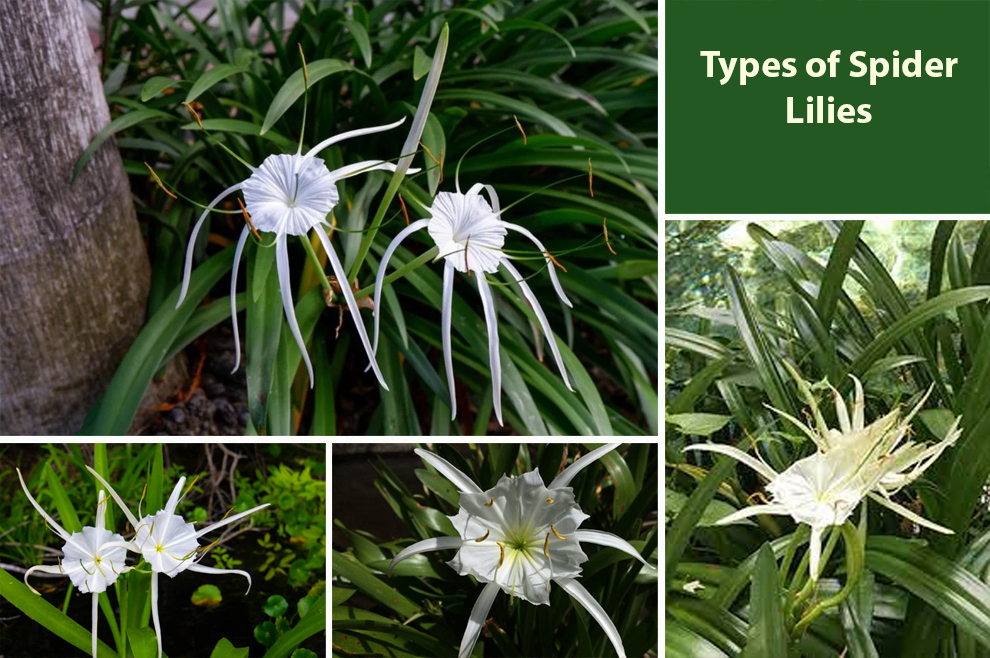
Spider Lilies, known for their enchanting blooms, encompass numerous plant species, with dozens of types found globally. While not true Lilies, Spider Lilies are a part of the Amaryllis family and depict unique characteristics which make them stand out in the floral world.
There are multiple types of Spider Lilies. Today we will classify them on the basis of their flower color. The most common ones with pretty looking blooms are Golden Spider Lily, White Spider Lily, Electric Blue Spider Lily, Pink Spider Lily, Purple Spider Lily etc.
These are native to China, where they have been appreciated and cultivated for their long stamens and delicate petals, resembling Spider legs.
The vibrant blossoms, which can reach approximately six inches in diameter, emerge on leafless, tall stems during the late summer and fall.
Post their blooming period Spider Lilies depict blue-green foliage that persists under the arrival of spring. Though their common name suggests a collection of true Lilies, Spider Lilies possess distinct traits that set them apart.
Please exercise caution when handling Spider Lilies, as they contain alkaloid lycorine, which renders them toxic to pets and humans.
Spider Lilies information
| Other Names | Spider Lily, hurricane Lily, cluster amaryllis, naked Lily, surprise Lily |
| Botanical Name | Lycoris spp. |
| Flowering Time | Summer, fall |
| Colors | Red, orange, pink, white, yellow |
| Plant type | Perennial, bulb |
| Native | Asia |
| Hardiness Zones | 6–10 (USDA) |
| Safe/Toxic | Spider lilies are toxic to pets as well as humans |
Is Lycoris and Red Spider Lily The Same?
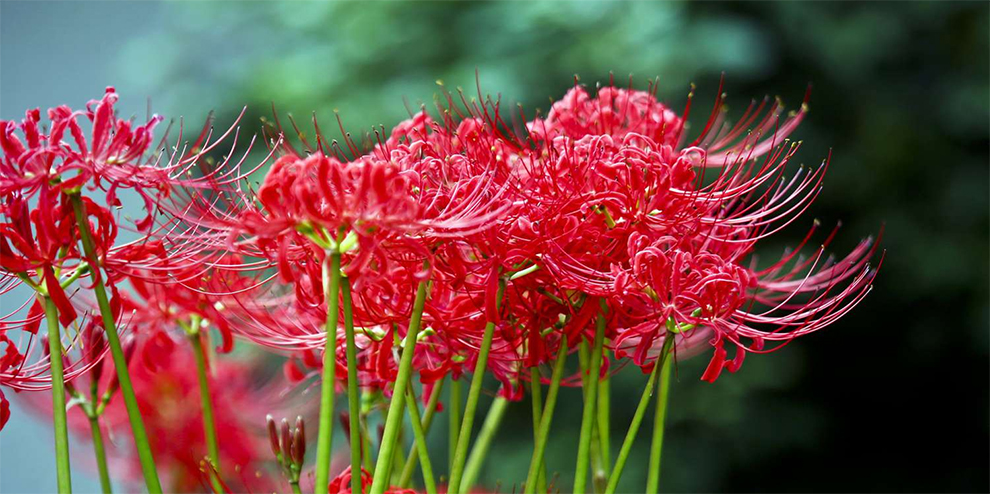
Yes, Red Spider Lily and Lycoris refer to the same group of plants. Lycoris is the botanical classification given to these plants, and one highly favored species in this genus is Lycoris radiata, which is commonly referred to as the red Spider Lily.
This specie is especially popular for its vibrant red flowers and is usually associated with Japanese culture, where it holds symbolic significance.
But it is worth noting that you can find Lycoris species in different hues like pink, yellow, white, and classic red.
So, while the Red Spider Lily is a well-known representative of the Lycoris genus, other species within the genus can also be referred to as Spider Lilies.
Different Types Of Spider Lilies – Unmissable Varieties
- Golden Spider Lily
- White Spider Lily
- Electric Blue Spider Lily
- Pink Spider Lily
- Purple Spider Lily
- Yellow Spider Lily
- Green Spider Lily
- Blue Spider Lily
- Peppermint Spider Lily
- Spider Lily Hybrids
- Orange Spider Lilly
We will now list the 11 most popular varieties of Spider Lilies, highlighting their distinct characteristics and eye-catching blooms.
A. Golden Spider Lily
Also called the Golden Hurricane Lily, the Golden Spider Lily, is a larger variety of Spider Lilies with stunning, fragrant blooms in a vibrant yellow-orange hue.
With distinguishing petals that form curvy, unique shapes and elongated, wavy stamens that look like whiskers, this Spider Lily species can add a touch of elegance to any garden. It typically grows up to two feet on the stems, and its eye-catching flowers reach a width of three inches.
Thriving in USDA zones eight through ten, the golden Spider Lily exhibits remarkable hardiness. They can endure temperatures as low as -20 degrees Fahrenheit. Its versatility lets it flourish in temperate and tropical climates, adapting well to various soil types.
Native to South and Central America, Golden Spider Lily has garnered popularity globally because of its superior qualities.
Its slow growth rate makes it live for up to a decade before it blooms, but when it blooms, it can grace your garden with its radiant presence during different seasons.
B. White Spider Lily
Hymenocallis Littoralis, or the white Spider Lily, is a native plant typically found near water bodies. Its fleeting yet enchanting flowers can accentuate the garden’s beauty.
Once its delicate petals fall, the flower fades away quickly. Gardeners believe planting the White Spider Lily in the yard can create an appealing outdoor space.
White Spider Lilies resemble the web-weaving spider and are best acquired as seed-grown specimens for their unique characteristics and smaller leaves.
Also known as Lycoris Albiflora, this perennial bulbous plant showcases clusters of 6-8 glistening white flowers with elegantly curled petals and long stamens.
The center stripe fades from creamy pink to pure white. Blooming in late summer on leafless stems, it exhibits dark green strap-shaped foliage that persists through winter, receding in spring.
Lycoris albiflora adds brilliance to autumn landscapes and is an attractive cut flower option.
C. Electric Blue Spider Lily
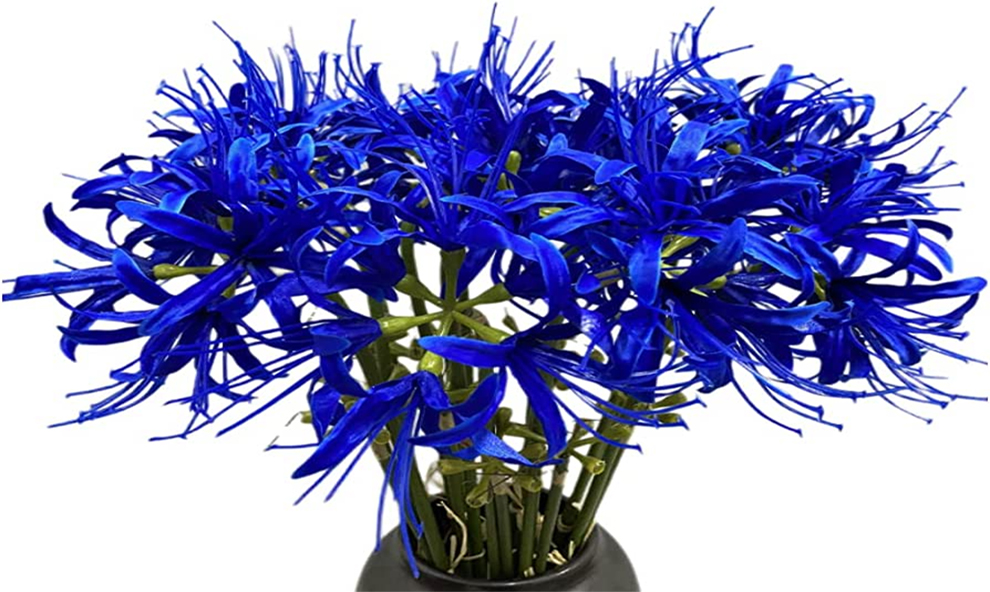
Botanically called the Lycoris Sprengeri, the Electric Blue Spider Lily was once hailed as one of the world’s most exquisite flowers. However, these types of Spider Lilies are endangered because of many human activities.
It is a unique plant and gets its name from its distinct leaf and web-like petal structure. Predominantly you will find two species under Electric Blue Spider Lily – L. grandiflora and L. Sprengeri.
The two varieties depict small white or yellow flowers, but the latter is the larger. Native to Europe, Electric Blue Spider Lily thrives at altitudes of 300-1000 meters above sea level.
You will primarily spot it in select regions of Slovenia, Austria, Germany, Switzerland, Italy, and France. The plant graces the late summer garden with charming umbels of fragrant, trumpet-shaped pink flowers.
D. Pink Spider Lily
Scientifically called the Lycoris Sprengeri, the small Pink Spider Lily distinguishes itself from its counterparts. It lacks the prominent protruding stamen found in golden and red Spider Lilies.
With blossoms reaching a width of 2.5 inches, this variety stands up to 2 feet tall. It thrives in USDA zones 8 and 9 and blooms with purple-pink flowers.
E. Purple Spider Lily
Its beautiful and vibrant petals signify rebirth and transformation, and its emerging sans foliage is a testament to the strength of adversity. This distinct flower has backward-curled petals mimicking Spider legs and forms captivating inflorescences in clusters.
While predominantly purple, you will find bloom variations in white, pink, and red. It grows up to 18 inches and thrives in well-drained soil in partially shaded areas.
F. Yellow Spider Lily
Scientifically called the Lycoris chinensis, the Yellow Spider Lily thrives in well-drained soil under sunny conditions. It benefits from adequate air circulation and nutrient-rich soil.
The plant grows up to 30 inches and displays heart-shaped leaves and vibrant yellow flowers. Though native to South America, Yellow Spider Lily has beautifully naturalized in various regions worldwide.
Beyond its ornamental value, this Spider Lily species has a rich history in Chinese traditional medicine. Its root can treat various ailments, while its flower goes into perfume-making.
People also use its stem to alleviate headaches. But please be cautious while handling the plant as its leaves are poisonous, but its flowers are non-toxic.
G. Green Spider Lily
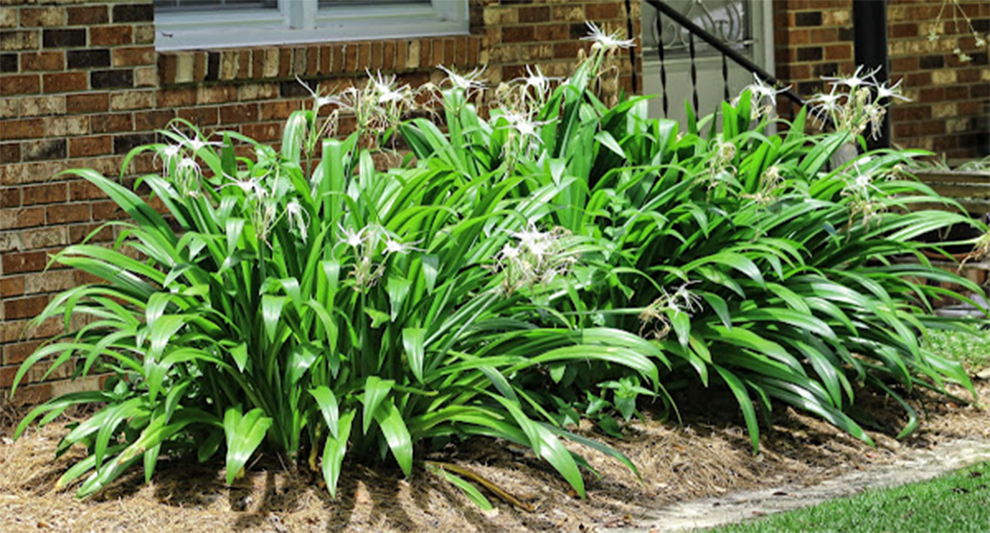
Also called the Hymenocallis Littoralis var. major, the Green Spider Lily is a captivating plant with unique characteristics. Its star-shaped, elegant flowers depict striking green petals, making it stand out in any garden.
This perennial bulbous plant usually grows up to two feet and thrives in full to partial sun. The Green Spider Lily cherishes well-drained, moist soil and thrives in USDA zones seven through eleven.
Its foliage adds an appealing touch with long-strap-like leaves complementing the vibrant green blooms. With its graceful presence and distinct color, the Green Spider Lily adds allure and charm to the outdoor space.
H. Blue Spider Lily
Most popular in the UK, Blue Spider Lily desires nutrient-rich soil for successful cultivation. Adding ample compost can also prove beneficial.
Further, careful watering is crucial to ensure both roots and leaves receive moisture separately. With proper care, the Blue Spider Lily displays vibrant clusters of trumpet-shaped fragrant blooms with striking blue streaks on their tips.
These charming flowers measure about 2 inches in diameter and grace the garden from late summer to early fall on the leafless stems. The plant has strap-shaped, narrow leaves that show in spring and gradually fade by mid-summer.
With its captivating presence, the Blue Spider Lily adds a touch of allure to the late-season borders and containers, making it a highly sought-after choice for gardening enthusiasts.
I. Peppermint Spider Lily
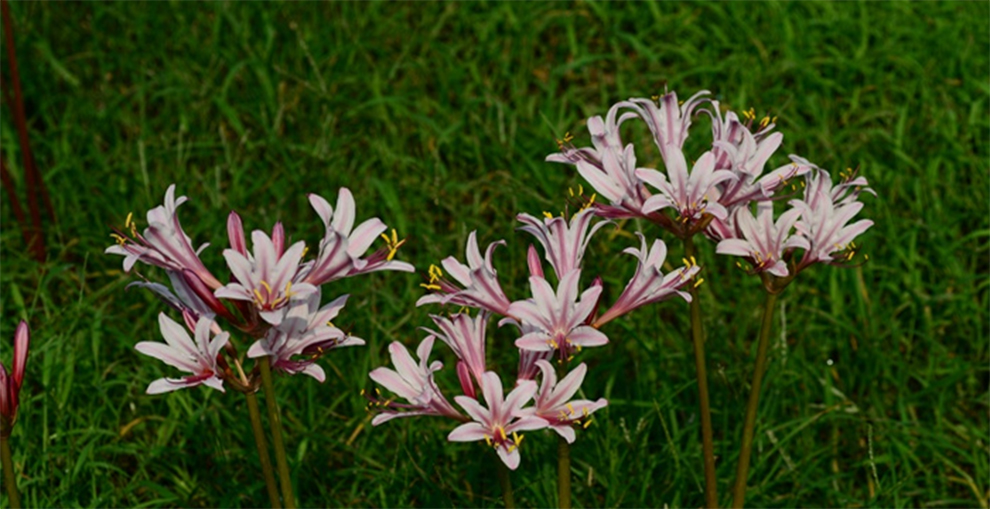
Peppermint Spider Lilies have thrived in North America since the 17th century, spreading wildly across the country. Despite being non-native, Lycoris Incarnate captivates the onlookers with its exquisite beauty and also offers culinary delights.
However, they may look similar to many different types of Spider Lilies, so accurate identification is vital when buying them.
These perennial herbs have bell-shaped, yellowish-green flowers with white petals and a central ring of stamens.
A pair of slender, green leaves gracefully adorn its stems. Savor the leaves reminiscent of mint for a unique taste but with a bolder flavor. Enhance salads, soups, or other dishes requiring fresh herbs.
J. Spider Lily Hybrids
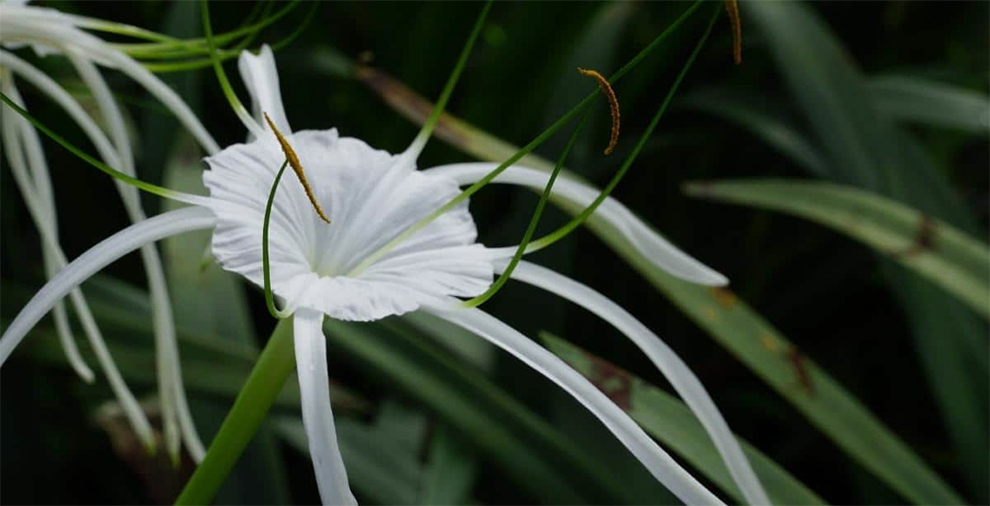
It is a group of beautiful plants derived from cross-breeding different Spider Lilies. These hybrids depict a stunning array of sizes, shapes, and colors, making them a favorite amongst gardening enthusiasts.
The Spider Lily hybrids add an enchanting touch to any landscape or garden with exquisite blooms and unique characteristics. They come in many color combinations, like yellow, white, pink, and red.
Some even feature multicolor or bi-color patterns. These hybrids are known for their adaptability and resilience. They thrive in a variety of soil conditions and climates. Spider Lily hybrids are a sight to behold, offering a delightful addition to every floral display.
K. Orange Spider Lilly
Botanically called the Lycoris sanguinea, Orange Spider Lily distinguishes itself from its golden and red counterparts by lacking prominent protruding stamens.
These flowers usually grow up to 2.5 inches, whereas the plants grow to 2 feet. They thrive in USDA zones eight through nine, and these Spider Lily types are also called the Orange Surprise Lily because of their vibrant hues.
When it blooms, it adds a beautiful splash of color to the landscape by exhibiting shades of salmon, orange-red, or red.
Related: How to Plant Spider Lilies
Spider Lily Information and Some Common Doubts
Ques 1. Are Spider Lilies poisonous?
Ans. Yes. Spider Lilies are poisonous to animals and humans. The leaves, bulbs, and flowers of the Spider lilies have toxic substances like glycosides and alkaloids.
Ingesting any part of the plant may induce symptoms like abdominal pain, vomiting, diarrhea, nausea, and in some severe cases, more dire consequences.
Thus, handle spider lilies with caution, especially if you have small children or pets at home who may accidentally come into contact with them. Ideally, you must keep your spider lilies out of reach and avoid consuming any part of the plant.
Ques 2. Are Spider Lilies an invasive species?
Ans. Spider lilies, or Lycoris species, are not generally considered invasive species. While they can naturalize and spread in certain conditions, they do not typically exhibit aggressive or destructive invasive behavior.
Spider lilies are cultivated as ornamental plants in gardens and landscapes, and their spread is controlled through cultivation practices.
However, it’s important to note that invasive potential can vary depending on the specific species and the region where they are grown. You must check with local authorities or invasive species lists to determine if spider lilies are considered invasive in your area.
